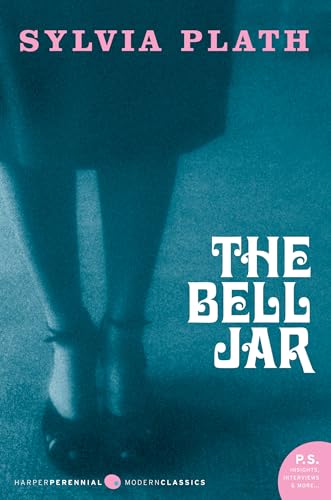Alright folks, put on your seatbelts because here comes my honest review of The Bell Jar. This isn’t just any old sad-girl-book (although, yes, there are a lot of sad-girl moments). I picked it up after losing a bet—my friend dared me to read something dark instead of my usual zombie novels. Spoiler: I didn’t regret it. From foggy minds to witty lines, and with a bunch of 1950s weirdness and a jar that’s more than just a kitchen item, this book gave me a lot to think about. Pour yourself a cup of coffee (or something stronger) and let’s get into it.
The Bell Jar By Sylvia Plath
In a nutsheel
If you like novels that make you think and sometimes squirm, this one’s for you. The Bell Jar by Sylvia Plath is a classic in the world of literary fiction. It’s got a big slice of coming-of-age, a dash of dark humor, and more than a scoop of heartbreak.
Our main star, Esther Greenwood, tries to chase her dreams in the glitzy world of 1950s New York. But it isn’t all parties and cute shoes. She battles huge questions about her future, her mind, and even her place as a woman in a society with more rules than my grandma’s kitchen. Plath pulls no punches bringing up mental health, identity, and the pressure to fit in.
If you want an honest, raw, and sometimes funny look at growing up and falling apart, you might want to grab this book. Just don’t read it on a sunny beach day, unless you like some drama with your sand.
Mental Health and Esther’s Struggles in The Bell Jar
Let me tell you, reading The Bell Jar by Sylvia Plath is not all sunshine and rainbows. This book takes you on a rollercoaster ride through Esther Greenwood’s struggles with mental health. I’ll be honest: I related to Esther’s confusion and sadness way more than I thought I would. But don’t worry, I didn’t end up hiding under my bed eating peanut butter (that was just that one time in college).
Esther’s mind isn’t just sad; it’s full of fog, anxiety, and weird thoughts that sneak up on her. Sometimes she’s so lost that she can barely talk to the people around her. I found myself yelling at the book: “Just say something, Esther!” But that’s the thing with mental health—it’s not a switch you can turn off. Plath shows how depression can mess with your thoughts, your sleep, and even basic stuff like making breakfast. I once burned my toast three times in a row because I was lost in thought, so maybe Esther and I are not so different after all.
One thing I liked was how honest everything felt. You see Esther struggle with doctors who don’t help and friends who don’t get it. It’s like she’s trapped under an actual bell jar, looking out but unable to reach anyone. But hey, at least she never had to sit through a group Zoom call about feelings (lucky her).
Up next, I’ll chat about the writing style and author’s voice—get ready, because Plath definitely wasn’t using spellcheck and emojis in her day!
The Strange Beauty of Sylvia Plath’s Writing Style in The Bell Jar
Let me tell you, reading The Bell Jar is like wandering around with your shoelaces tied together: you trip, you stumble, and sometimes you land face-first in a big puddle of poetic words. Sylvia Plath’s style is crisp but never cold. She wraps the whole story in a kind of gloomy fog, but you don’t get lost—you just end up seeing things in a new light. It’s almost like having sunglasses on indoors. Everything’s a bit dim, but you keep squinting because you know there’s a reason for it.
Plath’s voice is snarky, sharp, and witty with a side of ‘why-is-this-so-funny-when-it’s-so-sad?’ She can make the smallest moment in Esther’s life feel massive. One second you’re reading about figs (yes, actual fruit), and the next you realize you’ve been pondering choices and regret for half an hour. I once tried to write like her for a day—my friends stopped talking to me until dinner, and my goldfish looked worried.
What I love most is how Plath blends beauty with bleakness. Her sentences twist your brain, but her words go down easy. You don’t get purple prose or fluff—she skips the fancy stuff and sticks to feelings that hit you like a wet sock to the face. Not everything lands perfectly; sometimes her word games feel a bit forced. But even then, you get something true and fresh.
Okay, next up: hold onto your pearls—1950s society and gender rules are on the way!
1950s Society and Gender Roles in The Bell Jar
If you’ve ever felt out of place at a 1950s-themed party, imagine being Esther Greenwood in The Bell Jar, stuck in a world where the punchline is always, “When are you getting married?” The book walks us through the suffocating expectations women faced back then. I felt like I was holding my breath the whole time, except there was no dancefloor to awkwardly moonwalk away from uncomfortable conversations.
Sylvia Plath doesn’t sugarcoat what it’s like to be a young woman in this era. Esther is bright and ambitious, but everyone keeps pushing her towards a life of babies and Tupperware parties. I lost count of the times people told Esther she should focus on finding a nice husband. Honestly, reading those parts made me want to throw my own tie in the garbage and run for the hills.
The 1950s were all about fitting into neat boxes: you get a job (but not one that matters too much), you get married, and you keep quiet if you want to be liked. Esther’s attempts to break out of this mold are at the heart of the book. She wants to be a writer, not just someone’s spouse. If you ever cheered for someone who went against the grain, you’ll root for her too. Even when it feels like society has set booby traps every time she steps outside the norm, Esther keeps questioning. Sometimes she slips, sometimes she stands tall. Either way, you can’t look away.
Wondering what the bell jar really means? Hold onto your metaphorical hats—we’re about to explore the book’s symbolism in the next section!
Symbolism and Meaning: What’s That Bell Jar All About?
If you thought The Bell Jar was just about a, well, glass jar—think again! The title itself is the heart of Sylvia Plath’s book. The bell jar pops up as a big old symbol for Esther’s mental struggles. Just picture it: you’re under a jar, air is stale, everything looks warped, and you can’t get out. That’s pretty much how Esther says she feels as she deals with her mind playing tricks on her. I once got stuck in a sleeping bag on a camping trip and, folks, I now get what she means (minus the trauma).
What’s neat about this book is that Plath uses the bell jar as a way to show how people get trapped by things like depression, society, and even their own thoughts. Esther sees the world around her, but she’s separate—like she’s looking through glass. At some points, you want to give her a good shake and say, “Hey! You’re not alone!” but that’s sort of the point. This jar—unlike my sleeping bag—doesn’t just go away with some wiggling. It takes way more.
Another cool trick Plath pulls is that the bell jar doesn’t just stand for bad times. Sometimes life lets you lift the jar, even if it’s just a crack. And boy, you can feel the relief when Esther gets a little fresh air. It made me cheer for her, even if my dog did give me a funny look.
So, would I recommend The Bell Jar? Yep—unless you hate thinking about what jars you might be stuck under yourself. Then, maybe just read Garfield instead.
Conclusion
Alright folks, that wraps up my review of The Bell Jar. Sylvia Plath sure knew how to mix pain, sharp humor, and truth about the 1950s world and mental health. The writing? Crisp and real. The themes? Still fresh, even if my socks are not. Sure, it can get heavy and drag a bit in spots, but if you want a story that doesn’t sugarcoat life or growing up, this book’s for you. Thanks for reading my ramblings. Until next time, don’t keep your feelings bottled up like Esther’s bell jar!


